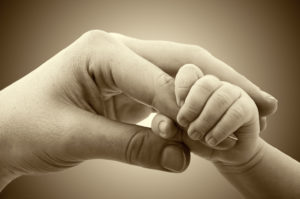From the Desk of Wendy Wixom:
Recently there have been numerous discussions surrounding the value of people. Human beings are of great value regardless of their age, race, sex, nationality, income status or religious beliefs. That might seem a logical statement. But, at what point is one’s value activated? During our years of development, we pass through various stages of growth – all with different titles – a baby, child, youth, young adult, adult, senior citizen, etc. Do any of those stages specifically denote the moment a person becomes worthy of value or did their value always exist? What about our value when our stages of growth are known as a zygote, an embryo, or a fetus?
In today’s article, Chase Tucker shares a rather graphic, yet powerful, personal experience and its impact on his understanding regarding the development of a person. He reminds us of the discussion the Supreme Court Justices held at the time of Roe v Wade regarding the definition of a “person” and why he believes today’s pro-life arguments might be more successful if the focus were on “personhood.” Seems Dr. Seuss in his classic “Horton Hears a Who” got it right:
“A person’s a person’s no matter how small…
From sun in the summer. To rain when it’s fall-ish.
I’m going to protect them no matter how small-ish.”
Spread the word,
Wendy Wixom, President
United Families International
The Personhood of the Fetus: Reframing the Abortion Debate
Contributed by Chase Tucker
I was 9 years old. I don’t remember much, but I can remember lots of blood as my mother tried to stop the bleeding. Moments before she had delivered a 12-week-old fetus into the toilet. She had enough time before the ambulance arrived to scoop the baby out with a spoon and show it to me and my brothers. We were shocked and sad that my mother had lost the baby. But what shocked me, even more, was how completely developed this 12-week-old fetus was.
There in the spoon laid a perfectly formed child with fingers, toes, arms, legs, and a face so clear you could see the eyelids and little lips. I can remember my 9-year-old brain trying to wrap my head around the concept that a person as big as my father started out as a person as small as this.
After my mother’s return from the hospital, we wrapped our little baby, placed her in a matchbox, and held a funeral in our backyard. But why would we hold a funeral for a miscarried fetus? If our family believed that this fetus was just a clump of cells that resembled a human, then a service was quite irrational. But we believed the little girl in that spoon was a human being; so we held a funeral for her because we lost a member of our family, even before she was born. Through her grief, my mother taught me that a person is indeed a person, no matter how small.
Denying personhood
Over the years, I learned that what my mother taught me is not a universal belief in our country. On January 22, 1973, the US Supreme Court, in a 7-2 decision, affirmed the legality of a woman’s right to have an abortion under the Fourteenth Amendment to the Constitution. That same Fourteenth Amendment asserts that no “State [shall] deprive any person of life”. The Court recognized this subtle but tragic irony which denied life to “smaller” people when Justice Harry Blackmun noted:
“If this suggestion of personhood is established, [Roe’s] case, of course, collapses, for the fetus’ right to life would then be guaranteed specifically by the [14th] Amendment.”
Those seven US Supreme Court justices who voted in favor of the legality of abortion believed that if an unborn baby was in actuality a “person” then that person has the same right to life as any other person living in the United States of America. However, the discussion of personhood was left alone when it was agreed that the Constitution does not define “person” even though it refers to the term. Roe eventually won. The decision laid the groundwork for a woman to legally have an abortion during the entirety of a pregnancy and defined different levels of state interest for regulating abortion in the second and third trimesters.
Because abortion is unavoidably tied to morality, the laws that regulate its practice vary across all states. For instance, Georgia’s law prohibits abortions after a heartbeat can be detected, which is usually when a woman is six weeks pregnant. The law makes no exception for cases of rape or incest and mandates a penalty for doctors who perform the procedure. New York’s laws allow abortion up to the time of birth when the mother’s health is at risk and repeals criminal charges for harming children in the womb.
Being pro-person
Because states cannot address the personhood of the fetus and the moral implications of that distinction, they substitute policy concerns over viability, presence of life, the woman’s right to privacy, or the balance between the woman’s health and the health of the fetus. This shifts the argument and makes it about life versus choice. But it’s not about being pro-life or pro-choice. It’s about being pro-person.
Yes, pro-person. There are too many arguments, definitions, theories, and opinions on the morality of abortion. In responding to those defending the Texas abortion law challenged in Roe v. Wade, Justice Blackmun pointed out that “when those trained in the respective disciplines of medicine, philosophy, and theology are unable to arrive at any consensus, the judiciary, at this point in the development of man’s knowledge, is not in a position to speculate as to the answer.” It is true, almost every school of thought differs in its definitions and opinions regarding the morality of abortion.
A general consensus regarding abortion cannot be attained through the discussion of abortion alone. There may never be an agreement between scholars, theorists, doctors, democrats, republicans, pro-life and pro-choice advocates on the morality of abortion and when it is appropriate for a woman to terminate the life of her child. For that reason, we need to reframe the debate.
The fetus – a person worth protecting
In its decision of Roe, the Supreme Court ran away from the issue of the fetus’s personhood. Society will argue about whether a human life is a person immediately at conception or after the baby passes through the vaginal canal, but the fact remains that the constitution protects ‘persons’ under the right to life and therefore the discussion needs to be person-centered.
When I saw my little sister laying in that spoon at 12 weeks gestation, I knew that she was a person. Roe V. Wade was decided in 1973 with the understanding that if a fetus was indeed a person, it had the right to life and could not be aborted. The justices decided that a fetus is not a person. Science tells us otherwise. Our own eyes tell us otherwise. It’s time for us to do what those seven Supreme Court Justices were unwilling to admit. The fetus is a person. It is worthy of our protection.
______________________________________________________________________
Chase Tucker earned his Bachelor of Science in Family Studies from BYU-Idaho and is currently pursuing a Masters in Public Administration. He is a father of two and he and his wife are expecting their third child soon.


